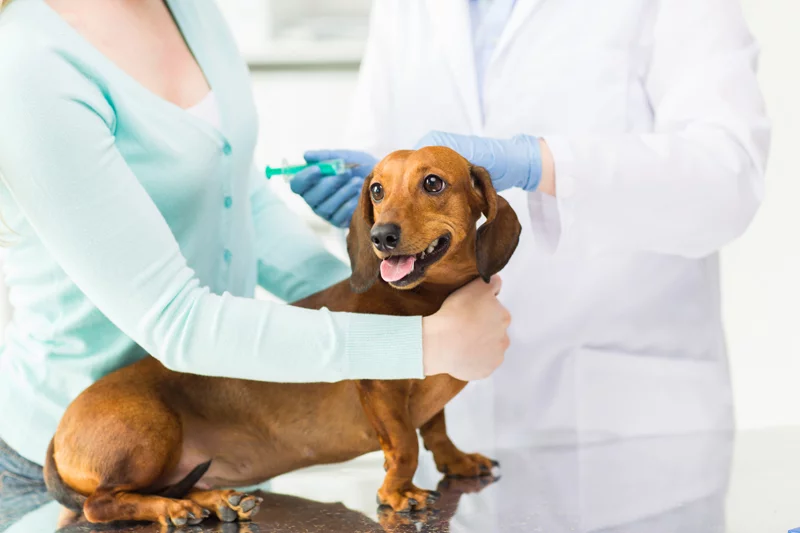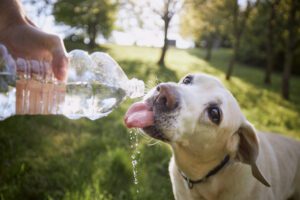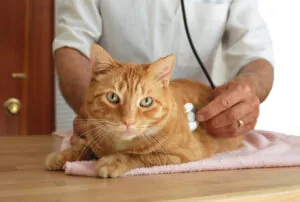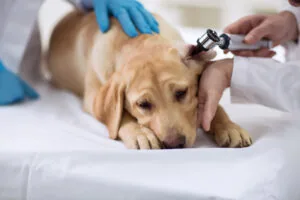Anal Glands and Recognizing Problems

What Are Anal Glands?
Anal glands, or anal sacs as they are sometimes called, are small paired pouches located between the internal and external anal sphincter muscles, one on each side of the anus at roughly the 4 and 8 o’clock position. Wild animals can express/empty their anal glands voluntarily to scent mark territory or as a defense mechanism, similar to a skunk. The secreted substance is normally an oily, brownish fluid that packs a strong odor. Liquid held inside the sac is usually expelled when a dog defecates, but if this does not occur on a regular basis, the material inside thickens, which makes it harder to pass. Then you see your dog scooting his bum on the ground or licking around the area. If the anal glands are not emptied they can become impacted and an abscess can form, which then bursts through the skin leaving a smelly, bloody, painful mess. This may be a temporary thing, such as during an episode of diarrhea, or it may be an ongoing issue.
Causes of Anal Gland Problems
Obesity
Obese animals do seem to have more trouble with their anal glands than do slimmer individuals, probably because extra body fat in the anal region lessens the pressure that passing feces applies to the glands.
Age/Breed Considerations
Relatively uncommon in cats and large breed dogs, anal gland infections and impactions are more often diagnosed in small breeds such as Toy and Miniature Poodles, Chihuahuas, and Lhasa Apsos. Cocker Spaniels, Basset Hounds, and Beagles also rank high on the list of breeds affected by anal gland difficulties. Dogs of any age and either sex can be affected.
The Role of Diet
While a change in diet alone won’t resolve a significant anal gland problem once it has developed, feeding a diet rich in fiber may help prevent future recurrences. The pressure of the firm, bulky stool against the colon wall near the anus can help to express the anal gland contents when a pet defecates.
Groomers
A difference of opinion exists regarding whether or not healthy anal glands should be routinely expressed by hand. Many veterinarians suggest that this should not be done in a normal dog with no history of problems. Many groomers make it a matter of routine, however, to express the anal glands of the dogs under their care. If you are concerned that frequent anal gland expressions may be causing your dog more troubles than they are solving, you can always request that your groomer skip this step.
Some individuals may be born with very narrow ducts that drain the glands, thereby obstructing the flow of anal sac material. Acquired damage to the duct can occur with perianal infections, trauma, allergies, or inflammation. Other potential causes include anal sphincter muscle dysfunction, distended anal glands, and overproduction of anal gland material.
Signs of Impacted or Infected Anal Glands
While dog scooting could be one possible symptom of anal gland problems, this behavior could have other causes, such as parasites or digestive problems. Or, it could simply be an itchy butt. Typically, a dog with impacted anal glands will scoot more than once or twice, and can also usually be seen licking their rear end. Redness or swelling around the sphincter is an indication that the glands are becoming infected, as is blood or puss in your dog’s stool or left behind on the carpet after they’ve finished scooting. Another cause of recurrent anal sac disease is change in stool consistency. This can occur in dogs with gastrointestinal diseases such as food allergies and inflammatory bowel disease.
When to See a Vet
Treatment for impaction involves expressing or emptying the sacs. If the impaction is severe or if there is an infection, it may be necessary to flush out the affected sac to remove the solidified material. Since these conditions are painful, some pets require a sedative or an anesthetic for this treatment. Antibiotics are often prescribed orally and sometimes may need to be instilled into the sacs. Most dogs will require pain relief medications for several days until the swelling and inflammation have subsided. In advanced or severe cases, surgery may be necessary. Problems with the anal sacs are common in all dogs, regardless of size or breed. If you are concerned that your pet may have an anal sac problem, call your veterinarian at once.
Manually expressing a dog’s anal glands is best taught in person by someone who is familiar with the process like a veterinarian or veterinary nurse. Any dog owner can learn to do this at home as long as there’s no infection present, but most people leave it to a professional because it’s unpleasant. There are two ways to express the anal sacs: externally and internally. Remember, before you attempt to express your dog’s anal sacs, it’s important to have your vet or a vet tech show you how. An improper expression can be very uncomfortable for your dog.
- The external expression is done by using a tissue or cloth to gently squeeze the anal area from the outside and massage out the fluid. It’s usually not possible to completely empty the anal sacs this way.
- An internal expression is done by inserting a gloved index finger into the anus and gently squeezing each anal sac (one at a time) between the index finger and thumb. The internal method is more effective, especially if the material in the anal sacs is thick. Since this is invasive, you’ll need help to keep your dog distracted and calm during the process. If the anal area appears red, inflamed, thickened, has an open sore, is painful or uncomfortable- Have your vet handle the expression as their may be an infection or abscess present and manipulation of the area may cause your dog extreme pain and will need proper treatment.
How to Prevent Anal Gland Problems
In general, a dog’s anal glands don’t need to be manually expressed unless there’s a problem. Many dogs are able to release the fluid regularly during bowel movements. In some cases, anal glands can become impacted or infected (abscessed). This is usually due to a long-term inability to empty the anal sacs during normal defecation. If your dog’s anal area becomes reddened or you see pus around its anus, this may indicate a problem with its anal sacs. Other possible but less common anal gland complications include benign or malignant tumors. See your veterinarian right away if your dog has ongoing issues with its anal glands. If your dog is continually scooting or engaging in other behavior that seems to center around its butt, it may be because of recurring anal gland issues. A common cause of this is a food allergy or intolerance. Because the anal sacs usually only empty when they get firm pressure from a solid bowel movement, if your dog’s bowel movements are frequently unformed, soft, or watery, the anal sacs may not get the pressure they need to empty. Speak with your veterinarian about elimination diets or the creation of a balanced and appropriate diet that may address any possible food sensitivities and improve poor stool consistency. Finally, some dogs may have poorly positioned anal glands, for example, located deep in the rectum.
Will removal have any adverse effects?
Anal glands can be surgically removed. But there are some things you should know before going for this option. There is a risk of damaging the nerves and the anal sphincter during surgery. This could leave your dog fecally incontinent. There is also a small risk that some of the anal gland wall can get left behind. If this happens, your dog could develop a draining sinus as the remaining tissue keeps making fluid. A second surgery is usually necessary.
Share This Post
Recent Posts
About Shallowford Animal Hospital
Shallowford Animal Hospital and The Pet Spa at Shallowford are dedicated to the exceptional, compassionate care your pet deserves. Pets hold a very special place in our families, and we treat yours like our own.



